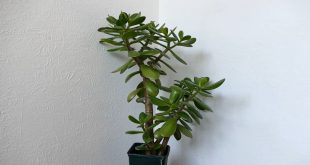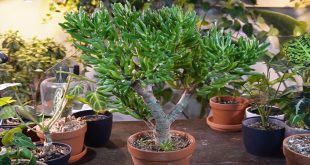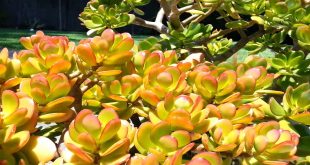Water jade plants once every 2-3 weeks in winter and 1-2 times per week in summer. Jade plants, also known as crassula ovata, are popular houseplants known for their fleshy, oval-shaped leaves and resilience.
Proper watering is essential for the health of a jade plant, and the frequency of watering depends on the season. In winter, when the plant is dormant, it requires less water and should be watered every 2-3 weeks. In contrast, during the summer when the plant is actively growing, it needs more frequent watering, usually 1-2 times per week.
By adjusting the watering schedule according to the season, you can ensure that your jade plant thrives and remains healthy throughout the year.
Understanding The Watering Needs Of Jade Plant
Jade plants are popular succulents known for their thick, fleshy leaves and easy care requirements. However, when it comes to watering these plants, it’s important to strike a balance. Understanding the watering needs of jade plants is crucial to their health and well-being, especially during the winter and summer seasons.
In this section, we will explore the watering requirements of jade plants and the factors to consider when determining how often they should be watered.
The Watering Requirements Of Jade Plants:
- Jade plants are native to arid regions and have evolved to thrive in dry conditions. This means they are drought-tolerant and do not require frequent watering.
- Overwatering is one of the common mistakes made when caring for jade plants. Excessive moisture can lead to root rot and eventually kill the plant. It’s vital to avoid waterlogged soil.
- In general, jade plants prefer being slightly underwatered rather than overwatered. Allow the soil to dry out between waterings to prevent root rot.
- During the winter season, when the growth rate of jade plants slows down, it’s essential to reduce the frequency of watering. The plant enters a semi-dormant state during this time and requires less moisture.
- Conversely, in the summer season when the plant is actively growing, it will require slightly more water. However, it’s important to avoid overwatering even during this period.
- It’s best to let the soil dry out between waterings and then thoroughly saturate it when watering. This mimics the natural rainfall patterns that jade plants would experience in their native habitat.
Factors To Consider When Watering Jade Plants:
- The type of potting mix used is crucial for proper drainage. A well-draining soil mix specifically designed for succulents will help prevent waterlogging.
- The size of the pot and the plant’s root system should also be taken into account. Smaller pots with limited drainage can result in water retention, while larger pots may require less frequent watering due to more soil volume.
- The amount of sunlight the jade plant receives is another aspect to consider when determining watering frequency. Increased sunlight exposure can lead to faster evaporation and may necessitate more frequent watering.
- Pay attention to the temperature and humidity levels in your environment. Warm, dry conditions may require more frequent watering, while cooler, more humid conditions may necessitate less watering.
- Finally, observe the plant itself for signs of water stress. Wrinkled or shriveled leaves are an indication that the jade plant requires watering, while soggy or yellowing leaves may suggest overwatering.
Remember, when it comes to watering jade plants, it’s better to err on the side of underwatering rather than overwatering. By understanding the specific watering requirements of these remarkable succulents and considering environmental factors, you can ensure the health and longevity of your jade plants throughout the year.
Watering Jade Plant In Winter Season
Winter Watering Tips For Jade Plants
During the winter season, it is essential to adjust the watering routine for your jade plants to ensure their well-being. Here are some important tips to keep in mind:
- Reduce watering frequency: Jade plants are native to arid climates and prefer dry conditions. As temperatures drop during winter, the plant’s growth slows down, and its water requirements decrease. Water your jade plant less frequently to avoid overwatering.
- Check soil moisture: Before watering, always check the moisture level of the soil. Stick your finger about an inch deep into the soil. If it feels dry, it’s time to water, but if the soil is still moist, hold off on watering.
- Water thoroughly: When it’s time to water, make sure to thoroughly saturate the soil. Allow the excess water to drain out from the drainage holes to prevent the roots from becoming waterlogged.
- Monitor humidity levels: In winter, indoor humidity tends to be lower due to heating systems. Consider placing a humidifier near your jade plant or misting its leaves occasionally to increase humidity levels.
Signs Of Overwatering During Winter
Overwatering is a common issue for jade plants during the winter season. It’s essential to recognize the signs of overwatering to prevent any harm to your plant. Here are a few indicators to watch out for:
- Yellowing and mushy leaves: If the leaves of your jade plant turn yellow or feel soft and mushy to the touch, it’s a sign of overwatering. Excess moisture causes the roots to rot, leading to weakened and discolored foliage.
- Drooping or wilting leaves: Overwatered jade plants may exhibit drooping or wilting leaves, even if the soil is damp. This is because the roots become waterlogged and cannot absorb oxygen properly, resulting in leaf stress.
- Soggy soil: Constantly wet or soggy soil is a clear indication of overwatering. The excess water inhibits the roots’ ability to breathe, leading to root rot and overall decline in the plant’s health.
Signs Of Underwatering During Winter
Although jade plants require less water in winter, it’s important not to neglect their hydration needs entirely. Here are some signs that your jade plant might be underwatered during the winter season:
- Wrinkled leaves: When a jade plant lacks water, its leaves can start to wrinkle and become limp. This is a defense mechanism to reduce water loss through transpiration.
- Dry and brittle stems: If the stems of your jade plant feel dry and brittle to the touch, it’s a sign of underwatering. Lack of water causes the plant tissues to dry out, making them more susceptible to breakage.
- Leaf drop: When a jade plant is severely underwatered, it may shed its lower leaves to conserve moisture for survival. If you notice excessive leaf dropping, it’s a signal to increase the watering frequency.
Remember, finding the right balance is crucial when watering your jade plant during the winter season. Pay attention to the signs, adjust your watering routine accordingly, and your jade plant will thrive even in the colder months.
Frequently Asked Questions On How Often To Water Jade Plant In Winter And Summer Season?
How Often Should I Water My Jade Plant In Winter?
During the winter season, you should water your jade plant sparingly, allowing the soil to dry out completely between watering’s. Overwatering can lead to root rot, so it’s important to check the soil moisture before watering.
How Often Should I Water My Jade Plant In Summer?
In the summer season, you should water your jade plant more frequently. Water it when the top inch of the soil feels dry. Make sure not to overwater, as jade plants prefer slightly drying out between watering’s.
Can I Use The Same Watering Schedule For Both Seasons?
No, the watering schedule for jade plants varies between winter and summer. In winter, water sparingly while in summer, water more frequently. Adapting the watering frequency based on the seasons will provide the ideal conditions for your jade plant’s growth and health.
Conclusion
Proper watering is crucial for the health and well-being of your jade plant throughout the year. During the winter season, it is recommended to reduce the watering frequency due to the plant’s dormancy period. Allow the soil to dry out partially before watering again, ensuring that you do not overwater and risk root rot.
In contrast, during the summer season, when the plant is actively growing, you should increase your watering frequency. Keep the soil consistently moist but avoid waterlogging. Remember to always check the moisture level of the soil before watering to ensure that you are meeting your jade plant’s specific needs.
By understanding the watering requirements of your jade plant during both winter and summer, you can help it thrive and remain healthy all year round. Enjoy the beauty and benefits this unique plant brings to your home or garden.
 GardenXpert Garden Advice Blog
GardenXpert Garden Advice Blog





